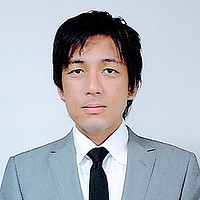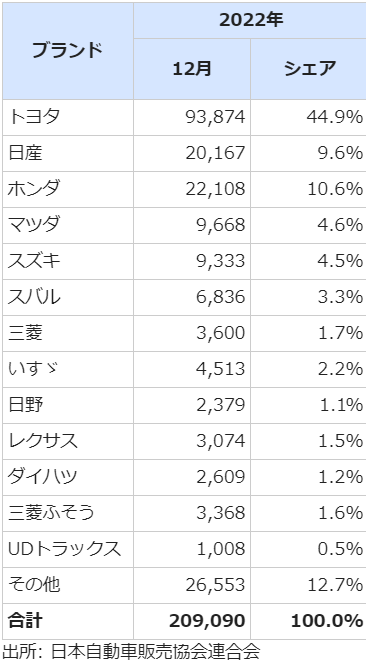
英検1級取得者によるオンライン個別指導のプロ
英語パーソナルジム HIET(ヒート)/ High Intensity English Training
- お電話での
お問い合わせ - 090-3825-5237
コラム
英文記事を読む:国家支援500億が水の泡 三菱 ジェット機開発中止 累積赤字8000億
2023年11月20日 公開 / 2023年12月16日更新
本記事は独学・国内学習による
英検1級保持者が書きました。
ホンダ の小型ジェット機が世界中から
5年連続で予約受注首位になるほど
大成功を収めています。
国産ジェット機開発の本命メーカーであった
三菱の惨状と明暗分かれる結果となりました。
かつてのゼロ戦メーカーでもある三菱には
国家支援(原資は税金)500億が投入されました。
その上で、開発断念したにもかかわらず、
国民に対して一言の謝罪もないことに
強い違和感を感じるのは僕だけでしょうか。
ちなみに、僕が高校時代の国内自動車販売シェア
で三菱と本田は拮抗していました。
その三菱は1%台まで凋落しています。
その理由は「空飛ぶタイヤ」という
映画になっています。
三菱の車両は自衛隊でも広く使われているため、
この状態は安全保障上の問題でもあります。
実は、国産ジェット機開発も安全保障(国防) 観点から
注視すべき動向と僕は考えます。
航空自衛隊の戦闘機国産化は、
既に1990年代から議論されていました。
その計画を担うのが三菱であったのです。
英検ライティングのトピックで、
「日本の航空機製造産業の可能性は有望か」
という観点を踏まえておきたいです。
以上を念頭に今回は本田と三菱のジェット機開発関連の
記事を見てみましょう。
各記事に語彙リストと日本語訳を付与しています。
NHK News
November 17, 2023
"As if the airplane was expressing a desire to fly, it floated lightly."
This was the impression left by the test pilot during the maiden flight in 2015. The aircraft, predominantly white against the blue sky, danced in the air. At that time, the "MRJ" (Mitsubishi Regional Jet, later renamed SpaceJet) was undoubtedly one of the protagonists in the Japanese industrial scene. Eight years have passed since then. However, in February of this year, Mitsubishi Heavy Industries announced its withdrawal from the development.
Why was the cherished "Japanese wing" forced to halt its development halfway? NHK Nagoya Broadcasting Station, which has been following the MRJ, thoroughly investigated the leaders who led the development of the first domestically produced passenger aircraft in half a century. Insights from testimonies have revealed the lessons left behind by the project.
The massive investment in a big project
Mitsubishi Heavy Industries initiated the project for the first domestically produced passenger aircraft in half a century in 2008, carrying the expectation of elevating the aviation industry in Japan.
The government provided approximately 50 billion yen in support. The subsidiary "Mitsubishi Aircraft" undertook the development based at Aichi Prefecture's Nagoya Airport, among other locations. Initially projected development costs amounted to 1.5 trillion yen. However, according to the summary by the private credit research company "Teikoku Databank," the cumulative deficit of "Mitsubishi Aircraft" exceeded 800 billion yen over these 15 years.
"'Building an aircraft that flies' is easy"
The first to respond to interviews with the intent of being useful was the former president of Mitsubishi Aircraft, Akio Kawai.
Kawai, who served as president for over two years starting in 2013, held a press conference in the year of his appointment, announcing the third delivery postponement. While he confidently stated to the gathered reporters, "I believe there won't be significant impacts," in reality, he harbored concerns about whether the airplane would indeed be completed by then and whether the engineers could truly meet the schedule.
Why was that?
At that time, the development team encountered a significant obstacle: obtaining the "Type Certification" to validate the aircraft's safety.
For passenger aircraft production, it's necessary to apply for type certification from Japanese authorities and the American aviation authorities, among others involved in manufacturing and delivery, clearing stringent international standard-based assessments. Particularly for passenger aircraft, responsible for the lives of many passengers, safety needs to be proven for over 1,200 items, including handling strong gusts, ice adhering to the wings, and more, with some criteria having vague descriptions without specific validation methods.
Kawai pointed out that "obtaining type certification" and "making the aircraft fly" are entirely different things.
Former President of Mitsubishi Aircraft, Akio Kawai:
"Building an aircraft that flies, well, that's relatively easy. However, creating an aircraft that can prove its safety is extremely challenging. The criteria for type certification are quite vague, so it's up to the people making the aircraft to figure out how to prove it. But for those without experience, they wouldn't know how to do it. Regarding obtaining the type certification for commercial aircraft, I think it's fair to say that everyone involved was essentially an amateur group."
"Complacency of the technocrats"
Japan once produced numerous aircraft like the Zero fighter, boasting top-notch technology worldwide.
However, despite developing the twin-engine propeller plane "YS-11" as the only domestically produced passenger aircraft post-war, it operated at a deficit and was discontinued in 1973 (Showa 48).
Since then, Japanese manufacturers have been in a position to supply parts to major foreign manufacturers in the field of civilian passenger aircraft.
They lacked the know-how to obtain the "type certification" for passenger aircraft.
Feeling a sense of crisis, Kawai invited a foreign technical expert with experience in obtaining type certifications from Boeing.
However, there were difficulties in collaboration on the ground, and he reflected on the inability to consolidate the organization.
Former President of Mitsubishi Aircraft, Akio Kawai:
"At that time, Japanese engineers were of the mindset, 'We know airplanes.' Foreign technical experts are top-level worldwide. However, even if they said something, being older, they were disregarded as 'What does this old guy know?' It's the complacency of technocrats. If we hadn't had that, perhaps things would have gone more smoothly. I feel regretful that I couldn't do anything about it."
● airplane - 飛行機
● maiden flight - 初飛行
● industrial scene - 産業界
● development halt - 開発中止
● protagonist - 主役
● aircraft - 航空機
● key industry - 基幹産業
● support - 支援
● cumulative deficit - 累積赤字
● type certification - 型式証明
● safety - 安全性
● to prove - 証明する
● criteria - 基準
● engineer/technician - 技術者
● complacency - 慢心
● foreign technical expert - 外国人技術者
● collaboration - 連携
● sense of crisis - 危機感
● older person/elder - 年寄り
● self-satisfaction - 自己満足
NHK News
2023年11月17日
「飛行機が飛びたいと言っているように、ふわっと浮かんだ」
テストパイロットが印象的なことばを残した2015年の初飛行。白を基調にした機体が青空に舞ったこの時、「MRJ」(三菱リージョナルジェット・後にスペースジェットに改称)は間違いなく日本産業界の主役の1人だった。それから8年。ことし2月に三菱重工は開発からの撤退を発表した。
悲願の「日本の翼」はなぜ道半ばで開発中止に追い込まれたのか。これまで「MRJ」を追いかけてきたNHK名古屋放送局では今回、半世紀ぶりの国産旅客機開発を率いたリーダーたちを徹底取材。証言からはプロジェクトが残した教訓が浮かび上がってきた。
巨額の資金が投じられたビッグプロジェクト
三菱重工が半世紀ぶりとなる国産旅客機開発の事業をスタートしたのは2008年。
航空機を日本の基幹産業に成長させるという期待を背負っていた。
国はおよそ500億円を支援。
子会社「三菱航空機」が愛知県の県営名古屋空港などを拠点として開発にあたった。
当初見込まれた開発費用は1500億円。
しかし、民間の信用調査会社「帝国データバンク」のまとめによれば、「三菱航空機」の累積赤字額はこの15年で8000億円以上にのぼる。
“飛ぶ飛行機をつくるのは簡単”
「自分で役に立てるなら」と最初に取材に応じてくれたのは三菱航空機の元社長、川井昭陽氏だった。
2013年から2年余りにわたって社長を務めた川井氏は、就任したその年に記者会見を開き、3回目の納入延期を発表した。
会見では詰めかけた記者たちをしっかりと見据え、「大きな影響はないのではないかと確信している」と言い切ったが、実は「それまでに本当に飛行機は仕上がるのか」「本当に予定どおり技術者たちはやれるだろうか」と不安な心境だったという。
それはなぜか。
開発陣がこの時、大きな壁に直面していたからだ。
それが機体の安全性を証明する「型式証明」の取得。
旅客機の量産には、製造する日本や納入先のアメリカ航空当局などに型式証明の申請を出し、国際基準に基づいた厳格な審査をクリアする必要がある。
特に多くの乗客の命を預かる旅客機は審査内容が多岐にわたり、突風が吹いたり、翼に氷が付着したりしても安全に運航できるかなど、あわせて1200以上の項目について安全性を証明する必要がある。
しかも表現があいまいで、具体的な証明方法が示されていないものも多いという。
川井氏は「型式証明の取得」と「飛行機を飛ばすこと」は全く別のことなのだと指摘した。
三菱航空機元社長 川井昭陽氏
「やっぱり、飛ぶ飛行機を作るのは易しいんです。だけど安全ということが証明できた飛行機を作るというのは、これはすっごく難しい話なんです。型式証明の基準はざくっとしか書いてないので、それをどう証明していくかは飛行機を作ろうとしている人間が決めていかないといけない。だけど未経験者はどうやっていいかわからんわけですよ。民間航空機の型式証明を取得していくということに関しては、みんな素人集団であったと言わざるをえないと思います」
“技術屋の慢心です”
かつて日本はゼロ戦など数多くの航空機を生産し、世界でも有数の技術を誇った。
その後、戦後唯一の国産旅客機として双発のプロペラ機「YS-11」を開発したものの、赤字を出し昭和48年に生産終了に追い込まれた。
以来、日本のメーカーは民間旅客機の分野では大手海外メーカーに部品を供給する立場だった。
旅客機の「型式証明」をとるノウハウがなかったのだ。
危機感を覚えた川井氏は、ボーイングのOBで型式証明の取得の実績がある外国人技術者を招へいする。
しかし、現場では思うように連携が進まず、組織をまとめることができなかったと振り返った。
三菱航空機元社長 川井昭陽氏
「その当時の日本の技術者たちは“俺たちは飛行機を知っているんだ”ということだったと思います。外国人技術者は世界のトップレベルです。だけどその人が言ったとしても、まあ年寄りですから、“年寄りが何を言っとるんだ”と、こうなるわけですよ。技術屋の慢心です。それさえなければもっとスムーズにいったのではないかという。それを何ともできなかった自分がやはり情けないなと思いますね」
Failure of Mitsubishi SpaceJet Holds Lessons for Future of Industry
February 14, 2023
The development of a domestically manufactured passenger plane has finally been forced to a halt. Why did the project fail despite the huge amount of money, including public funds, spent on it? For the sake of maintaining and developing the aircraft industry, the causes of the failure must be examined.
Mitsubishi Heavy Industries, Ltd. has announced that it will discontinue development of the Mitsubishi SpaceJet (MSJ), a domestically made passenger jet. The repeatedly delayed project had been frozen in October 2020.
The company said that the protracted development process has reduced the competitiveness of its features and equipment. It also cited the possibility that it would be required to adapt to next-generation fuel and electrification.
The company decided to halt the project because it would take several more years to obtain a Land, Infrastructure, Transport and Tourism Ministry “type certificate,” which is required to put the aircraft into service, and is expected to incur additional costs of several hundred billion yen.
It was a huge project in which MHI invested about ¥1 trillion and the government provided a subsidy of ¥50 billion. The company had already received orders for about 300 aircraft from Japanese airlines and other firms.
The aircraft industry encompasses a wide range of related businesses. MHI’s withdrawal from
the project is a disappointment, as it was also intended to strengthen the foundation of Japan’s manufacturing industry.
MHI decided to launch the project in 2008, initially aiming to deliver the first aircraft in 2013. However, delays related to component procurement, electrical wiring design changes and other factors caused delivery to be postponed six times.
MHI supplies aircraft components to companies including U.S. aircraft maker Boeing Co., and it has a wealth of expertise as an aircraft component manufacturer. However, the company lacked the capacity to design and manufacture an entire aircraft on its own.
Even so, the company initially was stuck on the idea of developing its own aircraft. Later, the company hired many foreign engineers, but the effective ties between them and Japanese engineers were not forged. These are believed to be some of the reasons for the failure.
At a press conference, MHI President Seiji Izumisawa said, “We lacked understanding of the process of acquiring a type certificate for civilian aircraft.” The factors behind the failure must be examined anew and used as lessons for the development of various technologies in the future.
The government, which has encouraged the development of Japan-made jet airliners, also bears a great deal of responsibility. It should be involved in the postmortem analysis.
On the other hand, the MSJ has flown more than 3,900 hours of test flights to date, surely producing a certain amount of knowledge.
Japan, the United Kingdom and Italy concluded an agreement in December to jointly develop state-of-the-art next-generation fighter jets with MHI joining the project as a core participant. The experience and human resources of the MSJ project should be used in the development of the fighter jet.
In the Japanese aircraft industry, a Honda Motor Co. subsidiary has been No. 1 in the world for five straight years in deliveries of business jets for transporting small groups of people. There are also many parts manufacturers with high technological capabilities. It is important for the government to restructure its strategy to strengthen the foundation of the aircraft industry.
(From The Yomiuri Shimbun, Feb. 14, 2023)
● failure - 失敗
● domestically manufactured - 国内製造された
● passenger plane - 旅客機
● forced to a halt - 停止させられた
● huge amount - 莫大な金額
● public funds - 公的資金
● maintaining - 維持する
● developing - 発展する
● examine - 調査する
● discontinuing - 中止する
● repeatedly delayed - 繰り返し遅延した
● frozen - 凍結された
● reduced - 減少した
● competitiveness - 競争力
● equipment - 装備
● cited - 引用した
● adapt - 適応する
● fuel - 燃料
● electrification - 電動化
● halt - 中止
● obtain - 入手する
● type certificate - 型式証明
● service - 運用
● incurred - 発生した
● subsidy - 補助金
● orders - 注文
● disappointed - 失望した
● intended - 意図された
● strengthening - 強化する
● initially - 最初は
● aiming - 目指して
● delays - 遅延
● procurement - 調達
● capacity - 能力
● tied - 結ばれた
● effective ties - 効果的な結びつき
● lack - 不足
● understanding - 理解
● civilian aircraft - 民間航空機
● postmortem analysis - 検証分析
● encouraged - 奨励した
● joint development - 共同開発
● state-of-the-art - 最先端の
● fighter jets - 戦闘機
● participant - 参加者
● experience - 経験
● human resources - 人材
● restructuring - 再構築
● strategy - 戦略
● strengthen - 強化する
三菱スペースジェットの失敗が産業の将来に教訓をもたらす
2023 年 2 月 14 日
国産旅客機の開発がついに中止に追い込まれた。 公的資金を含む巨額の資金が投じられたにもかかわらず、なぜ失敗したのか。 航空機産業の維持・発展のためには、失敗の原因を究明する必要がある。
三菱重工業は、国産ジェット旅客機「三菱スペースジェット(MSJ)」の開発を中止すると発表した。 繰り返し遅延していたプロジェクトは2020年10月に凍結されていた。
同社は、開発プロセスの長期化により機能や機器の競争力が低下したと述べた。 次世代燃料や電動化への対応が求められる可能性にも言及した。
同社は、機体の運航に必要な国土交通省の「型式証明」の取得にさらに数年を要し、数百ドルの追加費用が見込まれることから計画中止を決めた。 億円。
三菱重工が約1兆円を投資し、政府が500億円の補助金を出した巨大プロジェクトだった。 同社はすでに日本の航空会社などから約300機を受注していた。
航空機産業には幅広い関連ビジネスが含まれます。 三菱重工撤退
このプロジェクトは日本の製造業の基盤を強化することも目的としていただけに、このプロジェクトは残念だ。
三菱重工は2008年にプロジェクトの立ち上げを決定し、当初は2013年の初号機納入を目指していたが、部品調達の遅れや電気配線設計の変更などにより納入が6度延期された。
三菱重工は米国の航空機メーカー、ボーイング社などに航空機部品を供給しており、航空機部品メーカーとして豊富なノウハウを有している。 しかし、同社には航空機全体を自社で設計、製造する能力がありませんでした。
それでも、同社は当初、独自の航空機を開発するという考えに行き詰まっていました。 その後、同社は多くの外国人技術者を雇用しましたが、外国人技術者と日本人技術者との間に有効な関係は築かれませんでした。 これらが失敗の理由の一部であると考えられています。
三菱重工の泉沢清治社長は記者会見で「民間航空機の型式証明取得プロセスへの理解が不足していた」と述べた。 失敗の要因を改めて検証し、今後のさまざまな技術開発の教訓としていかなければなりません。
国産ジェット旅客機の開発を奨励してきた政府の責任も大きい。 事後分析に含める必要があります。
一方、MSJはこれまでに3,900時間以上の試験飛行を行っており、一定の知見は確実に得られている。
日本、英国、イタリアは12月、最新鋭の次世代戦闘機を共同開発する協定を締結し、三菱重工もプロジェクトの中核として参加する。 MSJプロジェクトの経験と人材は戦闘機の開発に生かされるべきである。
日本の航空機産業では、ホンダの子会社が少人数輸送用ビジネスジェットの納入実績で5年連続世界一となっている。 高い技術力を持った部品メーカーも数多くあります。 政府にとって航空機産業の基盤を強化する戦略を再構築することが重要である。
(読売新聞 2023年2月14日より)
Jiji Press
October 17, 2023
Honda Aircraft Names New Light Jet ‘Hondajet Echelon’
Las Vegas (Jiji Press) — Honda Aircraft Co. said Monday that it has decided to name its light business jet under development HondaJet Echelon.
The aircraft is expected to be the world’s first light business jet capable of nonstop transcontinental flight across the United States, according to the U.S. aircraft unit of automaker Honda Motor Co.
Honda Aircraft aims to launch the new jet after obtaining type certification necessary for commercialization in 2028.
The HondaJet Echelon will be “a game changer” for the aviation industry as it brings the flight experience that would be gained aboard a midsize jet to small aircraft passengers, Honda Aircraft President Hideto Yamasaki told a press conference at an ongoing aircraft trade show in Las Vegas.
The new jet will have a capacity to carry up to 11 crew members and passengers, up from eight for the existing HondaJet Elite II. Its maximum cruising distance will be 4,862 kilometers, up 1.7 to 1.8 times.
The HondaJet Echelon will offer performance equivalent to that of midsize aircraft, a popular category among private jet users, at the price of small aircraft, officials said.
Another advantage is that the new jet will require only one pilot against two required for a midsize jet, allowing users to save operating costs.
● light jet - ライトジェット
● nonstop - ノンストップ
● transcontinental flight - 大陸横断飛行
● commercialization - 商業化
● game changer - 変革者
● aviation industry - 航空産業
● passengers - 乗客
● press conference - 記者会見
● trade show - 貿易ショー
● capacity - 定員
● crew members - 乗組員
● existing - 現存の
● cruising distance - 巡航距離
● equivalent - 同等の
● category - カテゴリー
● private jet users - プライベートジェットの利用者
● officials - 関係者
● advantage - 利点
● pilot - パイロット
● operating costs - 運航コスト
時事通信社
2023 年 10 月 17 日
ホンダ航空機、新型小型ジェット機を「ホンダジェット・エシュロン」と命名
ラスベガス(時事通信)-ホンダエアクラフト社は月曜日、開発中の小型ビジネスジェット機の名称を「ホンダジェット・エシュロン」に決定したと発表した。
自動車メーカー、ホンダの米国航空機部門によると、同機は米国大陸横断無着陸飛行が可能な世界初の小型ビジネスジェット機となる見込みだという。
ホンダ航空機は新型ジェット機を2028年の商用化に必要な型式証明を取得した上で発売することを目指している。
ホンダジェット・エシュロンは、中型ジェット機で得られる飛行体験を小型航空機の乗客にももたらすため、航空業界にとって「革新的な製品」になるだろうと、ホンダ・エアクラフトの山崎秀人社長はラスで開催中の航空機見本市での記者会見で語った。 ベガス。
新しいジェット機は、既存のホンダジェット エリート II の 8 人から最大 11 人の乗組員と乗客を運ぶことができます。 最大航続距離は1.7~1.8倍の4862キロとなる。
関係者らによると、ホンダジェット・エシュロンは、プライベートジェット利用者の間で人気のある中型機と同等の性能を、小型機の価格で提供するという。
もう一つの利点は、中型ジェット機ではパイロットが 2 人必要であるのに対し、新型ジェット機ではパイロットが 1 人だけで済むため、ユーザーは運航コストを節約できることです。
今後も英語学習に関わる情報、体験談を発信していきます。
関連するコラム
- 英文記事を読む:大谷選手2年連続 MVP! 米国メディア報道:Was Shohei Ohtani Just a Dream? 2023-11-17
- 英語記事を読む 電気自動車のメリットはデメリットを上回るか 2023-11-10
- 英文記事を読む テロは撲滅できるか 2023-10-16
- 英文記事を読む:性別変更の手術要件は違憲 日本の最高裁が決定 2023-10-31
- 英文記事を読む:グローバリズムの是非 2023-11-09
コラムのテーマ一覧
カテゴリから記事を探す
TEX 二井原プロへの
お問い合わせ
マイベストプロを見た
と言うとスムーズです
勧誘を目的とした営業行為の上記電話番号によるお問合せはお断りしております。







